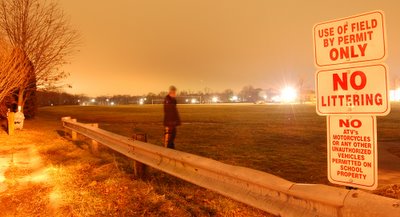Training



Click a picture for a larger version!








 The large tug is on a dry dock, where all parts can be accesed for maintenence. One possible operation so far is the addition of small blocks of zinc, which cut down on corrosion of the metal on the tug's underside. In return for the cut, they corrode, causing the need for replacement supposedly yearly. These little sliver bricks can be seen in the first shot, attached to the bow.
The large tug is on a dry dock, where all parts can be accesed for maintenence. One possible operation so far is the addition of small blocks of zinc, which cut down on corrosion of the metal on the tug's underside. In return for the cut, they corrode, causing the need for replacement supposedly yearly. These little sliver bricks can be seen in the first shot, attached to the bow. The Delaware River has some quality muck & sludge. This is still tidal water, so all this goo around the tire was constantly bobbing up an down.
This only got my attention because of the constrast: on a steel cart, with steel wheels,(!) which could be nearly a century old, there's a relatively modern water compartment off the back of a truck. Why not just use the truck frame at least, with rubber tires?

Another picture of little artistic qaulity or merit, but I find it interesting. What a way to make a ramp! This looks like it's as smooth as my 8 -year old efforts to make 30 degree angled ramps out of thick pieces of blasa wood, for tiny little toy cars. The ramp is from the rock onto another stationary barge.
Surely this hasn't been used in ages. Even with its decay, I find this to be a really ascetically pleasing looking little tug.
I would mention what this is now, but as far as we could tell, it's merely a floating dock to tether tugs and other barges to. I know what it used to be though: a railroad transfer barge. I'm told they were used in crowded waterfront spaces as if they were just a another section of land; with freight or passenger cars being unloaded or loaded on them. Thats why there is a large center space between the (remants in the form of clamps) tracks. In this space there was usually a platform for easy access.
This is called a literage barge. In the busy ports of Phildelphia, New York, Baltimore, and others, this was another way of transferring freight, rather than loading it in a wagon, truck, or railcar. It looks like a big box on a barge. This one is lettered for Erie Lackawanna, a railroad that went bankrupt in the late 60's and 70's, and was eventually merged into Conrail. Much of it's trackage is abandoned today.

This is a really curious building. It used to be a power station, but now it has been remodeled into an office building. Some of this is merely cosmetic though: the inside of this tower is a mass of rusting and peeling steel and piping. The enourmous boom out the side had a scoop that would drop down to unload coal from river barges. The coal was then used to generate electricity.




Medicine hut. Along with it, there seems to be a small office, a small pool, a shed, and those other building previous pictured. Wilmington has a population of 72,000.

Storage Shed? Children have written all over it, amusingly, along with several "I love Camp Ware!" and other happy comments, someone got in a "Camp Ware sucks" West End is a neighborhood in Wilmington. Looking at this shed, its obvious most kids really loved the new surroudings, the pool, the creek, etc. If only all of them had the oppurtunity... and if only the space and resources alotted weren't an insult.